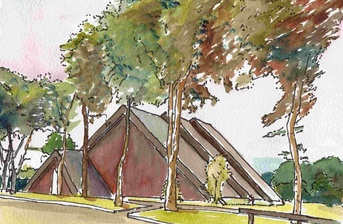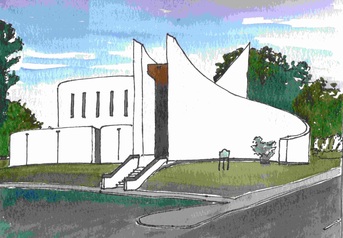End of Century
|
During the period, some sense of normality remained. A number of good churches were built to serve the expanding suburbs in the 1970’s. The best of these is Our Lady of Lourdes Church in Steelstown by Liam McCormick and Partners of 1974. Inspired by Scandinavian church design, this uses rough cut timber as an internal cladding in a large tent like space with subtle lighting from the sides.
In 1983, the Free Presbyterian’s opened a new church in the Waterside beside the recently constructed Lisnagelvin Shopping centre. This is a great exercise in soaring sculptural forms which recall the sails of a ship. To celebrate the end of the century, with an agreed way forward in the political sphere, the Millennium Forum is an example of a renewed confidence in the future. It takes pains to provide variety and depth around its perimeter. Bright timber, light exposed structure and copper details contrasting with light render and stone are very typical of the architecture of the period. |
|




